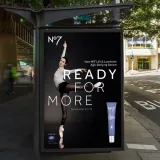


Is Your Brand Too Woke?
We asked the consumer and exposed a gulf between today’s marketers and today’s consumers.

“It could be seen as divisive – we’re not sure it’s a good idea”
“It isn’t inclusive enough ”
The plan was to create an unbiased survey of what a fully representative panel of UK consumers thought about brands supporting ‘progressive’ causes. But we were somewhat dismayed. We had sent our survey questions for a preview with some fellow marketers. The survey itself didn’t actually use the ‘W’ word, and we had gone to great lengths to create a balanced range of answers to the questions. However, our fellow marketers thought we were on very dangerous ground which we were advised to stay off.
We went ahead – and held our breath.
“Loved it”
“very good survey”
“this has educational purpose”
“…it’s got me thinking”
“Interesting topic and very relevant…”
“I am pleased to see this survey subject is being considered”
Of all the agency and client research we have done, our research into consumer’s attitudes to brands that take a woke stance got the most free text comments. 20% of participants commented, and 25% of those comments were overtly positive feedback about the survey itself. Something strange was going on here. Marketers didn’t want us to ask the question, consumers said they were very happy we did.
In a sense I could stop there. This revealed perfectly the issue about brands and social purpose. As our panellist Andrew Tenzer pointed out. Marketers are WEIRD* and consumers are not. They see things differently.
As a marketer who started my career at Procter & Gamble in the eighties, I have watched the brand purpose saga unfold with weary amazement. What I saw from the start was brand managers, typically just custodians of brands that others had built (they were standing on their predecessor’s shoulders) bringing their personal worldview, or even their politics to the brands they were advertising. This could never have happened back in the day, it would have been seen as laughably unprofessional. But in some major brand houses it has not only become the norm, but preached as best practice. What on earth has happened?
So in this article I will address three things: Firstly – what did we find out about what consumers made of what is often erroneously referred to by marketers as ‘Brand Purpose’? Secondly – why are today’s brand managers and their agencies playing with ‘Purpose’ in this way? And thirdly – why they shouldn’t be, and what they can do instead.
Social Purpose or Brand Purpose?
The Pull Agency have been grappling with Brand Purpose for a while. The fad for using it to refer to social purpose provided a dilemma that we felt we had to resolve. Pull develops brand strategy for clients. In doing so we often create a foundation piece we call a Brand Blueprint™. One element of this is defining a brand’s purpose or mission. All our work and plenty of research showed us brands that have an inspiring purpose are more likely to motivate staff and customers. However, observation, experience and common sense told us that the true purpose of all brands could not always be framed as providing a social good. As per Shakespeare’s definition of greatness: “Some are born great, some achieve greatness, and some have greatness thrust upon 'em.” Some brands have intrinsic social purpose, for some they can find one, and some – well – try to thrust one upon themselves.
Working on client’s brands it became increasingly obvious that we shouldn’t just follow the industry dogma: That brands must be seen to be supporting a progressive cause, and call that ‘Brand Purpose’. This was a sleight of hand that ignored the difference between actual brand purpose and a brand having a social purpose. We wanted everyone to be clear just how intrinsic social purpose was to a brand – another way of looking at this was to see at it as a level of authenticity. In this article I explained how at one extreme clothing brand Patagonia is completely authentic, in that sustainability is truly intrinsic to their brand purpose. At the other extreme Ben & Jerry’s borrowing the cause of Black Lives Matter, or Gillette the cause of correcting ‘Toxic Masculinity’ was essentially fake. Not only did it bear no connection with the true brand purpose (making impossibly more-ish ice cream and providing a good shave), but it has been demonstrated that adopting these political causes can actually damage a brands’ image and alienate a large proportion of consumers.
Thus we developed a Brand Social Purpose model explained here.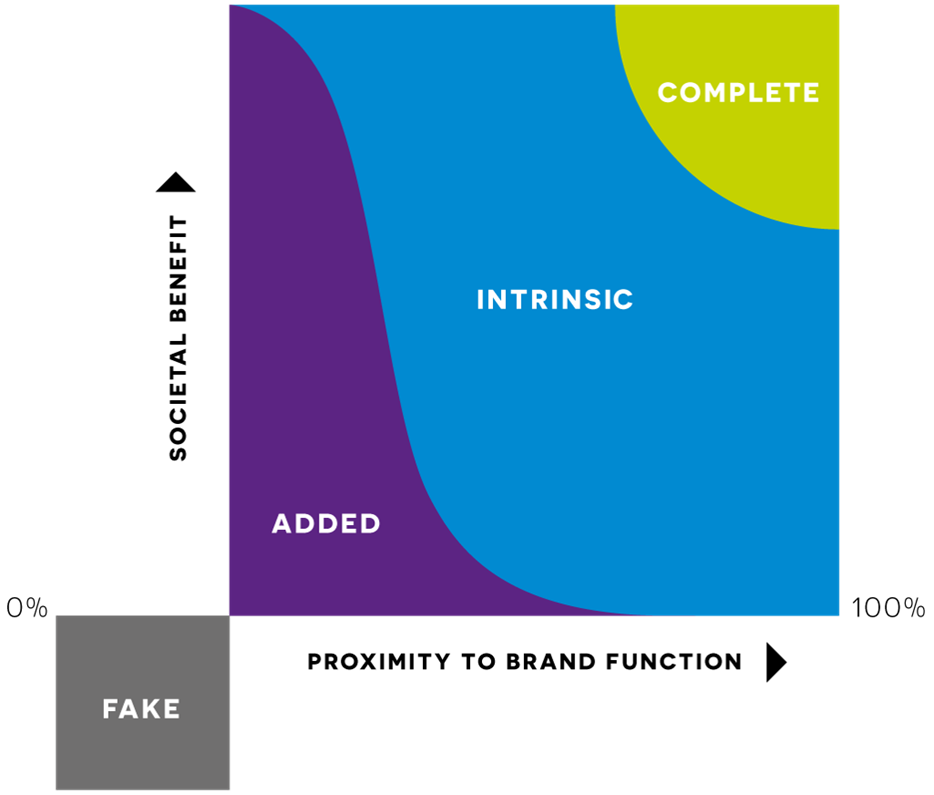
I think it is worth saying at this point that the fake/added social purpose advocates have muddied the water which doesn’t help. They have tried to re-purpose the ordinary word purpose. They have taken what we define as fake and added purpose (i.e. borrowing a woke cause which has no intrinsic connection to their brand) and shamelessly called it brand purpose – which of course it isn’t.
Brand Purpose as used and abused by marketers has had some shaky moments, and some critics from within the marketing world. Notably marketing academic Mark Ritson who regularly and humorously decries what he calls ‘Purpose-wank’. Also former global creative director and award-winning copywriter Steve Harrison who is equally scathing and entertaining in his best-selling book on why the ad industry has lost its way – ‘Can’t Sell Won’t Sell’. Marketing practitioner and academic Kimberly A. Whitler also made a notable contribution as a dissenting voice challenging marketers to evidence their support for political causes. However, even when ridiculed by highly credentialled investors, the rest of the marketing community just doubles down, thinking it is enough to say that they could sleep easy at night knowing they had ‘done the right thing’. We come on to examine this sense of moral superiority later. Clue: You’re right – ‘Brand Purpose’ has nothing to do with marketing and everything to do with marketers.
So it was this background of our own unease with the way marketers talked about ‘Brand Purpose’, the investing world’s attack on it, and marketers generally doubling down and defending the approach which made us think: “Would it be possible to get a reading on what consumers think of brand purpose? Mindful of course that we were doubtful that real people - acting as ‘cognitive misers’ - actually thought about it at all.
Constructing that research was therefore quite a challenge, and we were especially careful to get a panel that was fully representative of the UK population and to avoid any of our own biases creeping in. And while we are talking of bias – a word of warning about pro-social bias. Experienced researchers will tell you what to expect in a world of social media censoring, cancellations and rampant virtue signalling. More than ever before, consumers want to give the socially ‘correct’ answer – even in the anonymity of an online survey. One of our panellists, Andrew Tenzer related at our launch event how he regularly asks for a show of hands for the question: “Given the choice, would you prefer to buy from sustainable suppliers?” Almost everyone puts their hands up. “How many have bought something from Amazon in the last month?” Almost everyone puts their hands up. Researchers face a massive problem in that there is a huge gap between what people say and what they do.
Our consumer research into brand purpose – what did we learn?
Only 22% of consumers claimed that they knew what was meant by brand purpose. Given that Gen Z were three times more likely to claim they knew what it meant than Boomers, it seems fair to assume that they are reading ‘brand purpose’ as ‘social purpose’. Presumably we can safely assume that the 22% figure would have been much higher among marketers.Consumers were thankful that someone finally asked what they thought. We received the highest ever number of comments – 25% of the just over 2,000 respondents made a comment on the survey and 20% of those comments included a thank you for an opportunity to contribute to the debate. So consumers wanted the questions asked. In our experience marketers didn’t.
68% of consumers are uneasy or unsure about brands supporting woke causes. This should give marketers pause for thought. But on the other hand, it meant that 32% of respondents thought that brands should support as many of our offered list of causes as possible: Climate change, BLM, LGBTQ+, Equality, diversity and inclusion, female body confidence. At the other extreme, 8% said that they would actively avoid brands that support those causes. Of course the question that is harder to answer is whether the 32% would go out of their way to purchase brands because of their support for social, woke or political causes. Academic evidence suggests that the 8% are more likely to act on their sentiment than the 32%.
There are strong generational differences in attitude among genders and generations. Women were nearly twice as much in favour of brands supporting social causes than men, and Gen Z were 3 times more favourable than Boomers. But again, we don’t know to what extent this translates to buying behaviour. (it’s worth bearing in mind that many researchers suggest that younger generations have both a better moral framework than older people, and are more likely to buy sustainable brands for instance, without any evidence for either in terms of actual behaviour.) As Andrew Tenzer pointed out at our event, you have to be careful about muddling generational effects with cohort effects. Young people have always been idealistic and cause-driven. Young people grow up though.
Consumers’ trust in brands’ involvement with social causes is shaky. While on the one hand quite a high proportion of consumers say that they want brands to get involved with social (or woke) causes, 58% think that a lot of that involvement is insincere – woke-washing or green-washing. Demonstrating that perhaps it is easier to make enemies of consumers than friends through promoting social causes, 15% of consumers say they will avoid brands that they think are indulging in woke or green-washing.
Consumers have had plenty of opportunity to say that they endorse brands supporting social causes in research over recent years, but to our knowledge this has never been tested against alternatives. Pro-social bias means that there is pressure on consumers to say they support fashionable causes. But what if they are given an alternative?
Then the picture changes quite rapidly. Can you imagine if Starbucks, or Amazon, or Ben & Jerry’s put these alternatives to their customers what their answer might be?
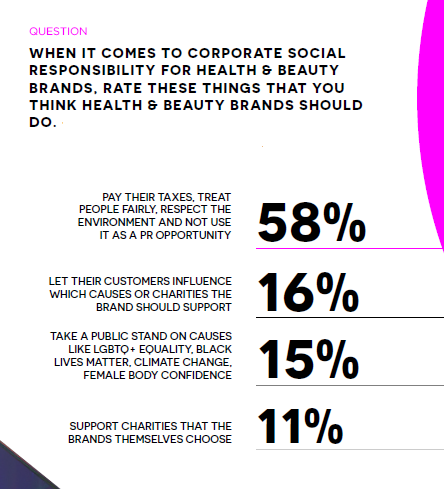
58% of consumers would prefer that brands simply pay their taxes, treat people fairly and respect the environment – almost four times more than want brands to support woke causes.
We know marketers like supporting woke causes with ‘their’ brands, consumers appear far less enthusiastic.
When digging into which social causes consumers want health and beauty brands to support, a pattern of ‘proximity’ emerges which supports our social purpose model described above. Sustainability comes top followed by female body positivity. Both of these causes have a direct relationship with the product. Black Lives Matter and LGBTQ+ Equality come at the bottom of the list, you could argue probably because of the lack of an intrinsic link to the brand’s actual purpose. Almost half as many people thought health and beauty brands shouldn’t support BLM as those who thought brands should – clearly a divisive issue for brands to get involved in.
Beware the sustainability trap. Previous research done by the Pull Agency suggest that although consumers want the brands they use to have a low environmental impact, it comes fourth in the list of things they demand of a brand after efficacy, value and quality. And as the majority of brands move to some sort of sustainability claims it is becoming a hygiene factor and not a differentiator. Sustainability alone is no longer a sole rationale for launching a new health and beauty brand.
Body Positivity is the most important cause for women. They firmly reject the idea that women need ‘aspirational’ models to inspire them in product ads (5% support). 79% of women under the age of 55 want the industry to help them feel good about themselves.
But before you seize on body positivity as your brand platform – it is already owned – by Dove. Dove was named by three times more people in our research than any other brands for promoting body positivity well.
It is worth pointing out however, that according to many of our research participants, the current practice of using less than perfect models in ads has not yet been extended to men!
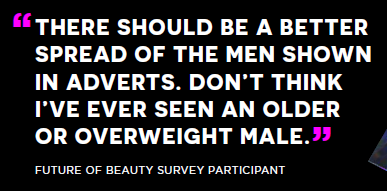
60% of people don’t feel well represented in health & beauty ads, this percentage rises for white people and older men. 29% of people of BAME ethnicity described themselves as well represented compared to only 19% of non-BAME. Contrary to a commonly expressed view within the marketing community that the industry needs to ‘do a lot more’ about diversity and inclusion, it looks as though it has in fact done enough (but clumsily) when it comes to representing ethnicity. 2020 research by the Creative Diversity Network based on 30,000 TV productions found that both ethnic and LBTQ+ minorities were represented at 2X the population rate, and it was older and the disabled that were the most under-represented.
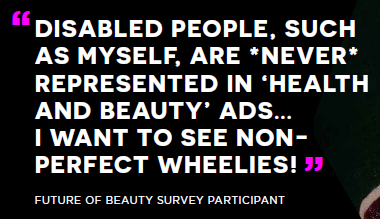
Our research mirrored this finding. The un-thinking addition of ethnic, and in particular mixed-race couples, is seen by consumers as an ‘easy win’ for lazy advertisers and contributing to the impression that advertising has ‘gone woke’. It was clear from our research and comments we received that people are simply looking for realistic representation of the actuality of UK population diversity. Advertisers need to be more imaginative in dealing with this. The largest group in our research by far – 43% – chose the option that brands should simply ‘reflect the real users of the brand.’
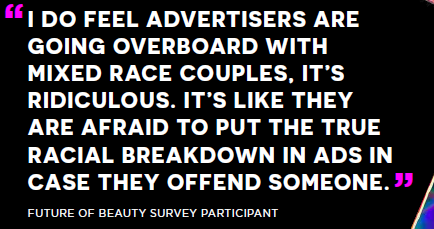
So what’s going on? From our finding you can deduce:
- Consumers want to explore whether brands are too woke – marketers would rather not.
- Consumers are uneasy about brand support of woke causes – marketers aren’t.
- Consumers would prefer companies to pay their taxes, treat people fairly and respect the environment – marketers would prefer to tell you about their ‘Brand purpose’.
- Marketers think sustainability is a differentiator – consumers don’t.
- Marketers think that although they have nearly nailed diversity using mixed-race couples, ads could still be more ethnically diverse. Consumers just want to see real brand users including older and disabled ones.
- Consumers used to find ads entertaining. Marketers want to tell consumers how they should think.
Would it be fair to say that marketers are out of touch with the people they are marketing too? Yes. So let’s look at more of the evidence. Andrew Tenzer, who electrified our report launch event thinks that marketers are WEIRD – that is from a western, educated, industrial, rich and democratic elite. *The idea of WEIRD was popularised by the leading social psychologist Jonathan Haidt in his book The Righteous Mind. Andrew expands this idea in his white paper The Empathy Delusion, showing that marketers tend to think they have advanced levels of empathy and a superior moral framework. Unfortunately research has disproved the former and of course no research supports the latter.
In addition research shows that modern marketers self-identify to the left politically of the modern mainstream, are (for instance) less proud of their country’s history and more likely to believe that women have identical roles in society. Translated into the language of the modern mainstream – marketers are woke, the mainstream aren’t. As a result, “[brand purpose] is highly seductive to our industry on a personal level.” – The Empathy Delusion.
So Marketers are WEIRD and out of touch with the mainstream they are trying to communicate to – what should they do about it?
Firstly – recognise that you are different from the people you are trying to communicate with. Consider what that might mean. Please recognise that you are not more empathetic or morally superior than the people you are talking to. You do however have a different political viewpoint. Please leave it at home and don’t bring it to your brand.That means not adding unrelated social purpose in the form of political causes that you personally love to your mayonnaise, ice cream, skincare brand or whatever and calling it ‘brand purpose’ – you are embarrassing the profession of marketing and bastardising the meaning of the English language.
But lastly, being cautious of added or fake social purpose doesn’t mean that you can’t find an authentic purpose in your brand beyond making money. At Pull we are driven by the belief that all brands have a better story waiting to be told, and have helped many brands find a meaning and a cause that reflected values the brand and its creators and employees were already living. A good example was Andertons. Interviewing their staff and customers we uncovered the fact that they weren’t selling guitars, they were talking music-making with their customers, they just sold a lot of guitars in the process. They had been ‘Making musicians since 1964’ – that’s a pretty worthy purpose.
Another of our guest panellists at our research launch event summed this up perfectly while talking about the brand that she founded:
“It starts with our values. We know crystal clear why we are here, who we serve, and why we are doing what we are doing. That clarity of purpose helps us refine not just our growth vision for the brand, but also our marketing and communications. Those values link through to every touch point.”
- Lauren Murrell, Founder of skincare brand By Sarah London
Posted 23 May 2022 by Chris Bullick